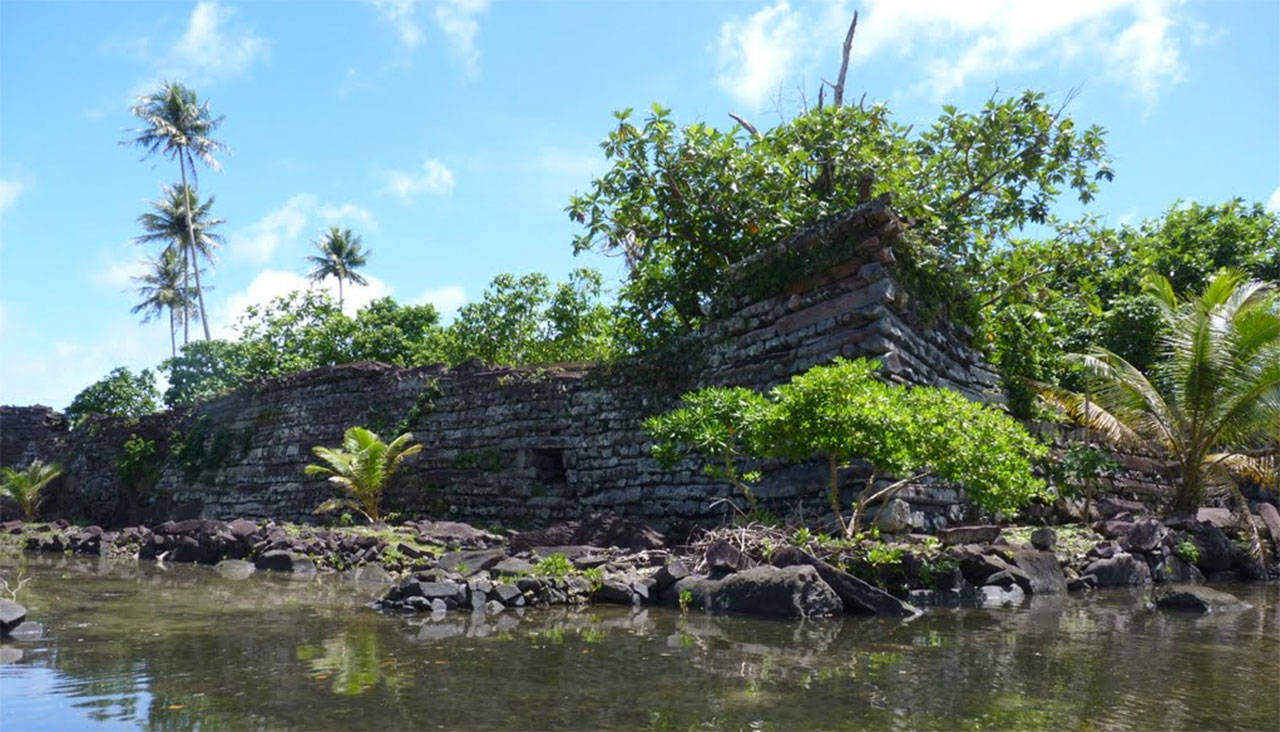Submitted by Lynn Danaher
President, Pacific Islands Research Institute
Director, Friday Harbor Film Festival
This is the fourth expedition planned by the Pacific Islands Research Institute, since founding the Friday Harbor Film Festival in 2013. To date, expeditions have been to the Marquesas in 2013, Raivavae, French Polynesia in 2015, Easter Island in 2016, and Micronesia in 2017. All costs of the expeditions are paid by the participants, who are mostly Explorers Club members. Each expedition contributes any residual funds — after all costs of the expedition have been met — to the FHFF. The PIRI is the founding organization of the FHFF, as both organizations are in complete agreement with their missions. The PIRI has contributed over $16,000 towards the support of the festival.
Three of the last four PIRI expeditions have been awarded the prestigious Explorer Club flag to carry into the field, which holds a very high standard for qualification. The Explorers Club Flag is a symbol of courage and fidelity. The award of the flag is a significant accomplishment. Since 1918, the flag has been carried to all of the Earth’s continents, both poles, as well as under the sea and into the stars. To date, 850 explorers have carried the flag on over 1450 expeditions. A select handful of the 222 Explorers Club flags have been framed and now decorate the clubhouse in New York. These include flags carried by Roy Chapman Andrews (the character Indians Jones was modeled after), Bob Ballard (Titanic), Thor Heyerdahl (Kon-Tiki), and miniature flags carried aboard the Apollo 8 and Apollo 15, among many other well-known expeditions.
Several films screened at the FHFF are made by members of the Explorers Club, including the 2015 winner, “No Place on Earth”.
The next expedition will visit two remote islands in Micronesia, Kosrae (sites: Menke and Leluh) and Pohnpei (Nan Madol). We will investigate the relationship of the remarkable sites on each island with their alignments to celestial bodies, as well as record petroglyphs and take measurements and 3D photographs.
Below is a summary of the expedition.
KOSRAE (Menka and Leluh)
We plan to explore the island and two remarkable sites: the Menka and Leluh ruins. Kosrae is a small tropical volcanic remnant of 42 square miles surrounded by an attached reef that winds its way around the island. There are several barrier islands covered with Mangrove that act as a nursery for immature fish, so important for renewing the reef fish populations. The weather averages 80 degrees year around with relatively high humidity of 80 percent. It’s lovely, warm, humid and very lush. The history of the island is defined by the former occupiers’ timeline, first the Spanish, then the Germans, the Japanese occupied the island before and during World War II, followed by their liberation by the USA. They are now the independent Federated States of Micronesia and enjoy protected status and free association with the USA. Residents can travel freely so many join the US military and as a result, the island population is in decline due to lack of jobs and economic opportunity the allure of America is too tempting. The population runs at around 6,000 as of the most recent census but many abandoned buildings attest to the out-migration, standing roofless in a vine covered slow decay. The visitor industry is in decline also, tho the diving is spectacular, the ruins are stunning and the people are very friendly. The island is absolutely lovely, however, verdant green with towering ridge of peaks the highest being just over 2,000 ft. The people are genuinely friendly, are very warm and welcoming. Visitors are few and of the four hotels listed in the guidebooks, only two are actually operational.
Little is know about the early islanders, except they built remarkable structures unparalleled throughout the Pacific for their size and complexity. While on Kosrae we will visit both the ancient Menka ruins, its a long jungle hike to a large site spread thru out a valley deep in the jungle well away from the shoreline. Menka is made primarily from large boulders, estimated to be over 2,000 years old.
We will also visit the extraordinary Leluh ruins made from columnar basalt stacked in a very precise way. Leluh was completely built by adding extensive landfill onto a shallow reef in a similar style to Nan Madol on Pohnpei. It is from a much later time, approx.. 1100-1400 AD. Both are amazing examples of unique complex structures found thru out the islands of the Pacific, attesting to the ability of these islanders to amass great manpower.
Pohnpei (Nan Madol)
Nan Madol is a prehistoric “city” of more than 90 man-made islets off the coast of Temwen Island, constructed of naturally-occurring prismatic basalt columns, basalt boulders, and coral fill. Many of the islets have large, complicated structures on them composed of the same types of rock — stones as heavy as 90 tons. Together, the islets formed a powerful administrative and religious complex from which the island of Pohnpei was ruled for several hundred years by a line of tyrannical monarchs called Saudeleurs. The lower city, Madol Pah, was the administrative center, while the upper city, Madol Powe, was the ceremonial heart of the complex.
Megalithic sites like Nan Madol are rare around the world and even rarer in the Pacific. Anyone who has seen the city would place it alongside other more famous megalithic feats such as the pyramids of Egypt and Central America, Stonehenge, Machu Picchu, and Rapa Nui’s moai. And yet, Nan Madol is little-known outside the archaeological community and visited by a surprisingly small number of people each year. During our days exploring Nan Madol, we will also have an opportunity to enjoy waterfalls and see an amazing flat basalt plain of petroglyphs.
We also plan to visit the quarry where the stones were mined. Anyone interested in our findings is welcome to write me at 4islandexplorer@gmail.com to request a copy of our finished report.




